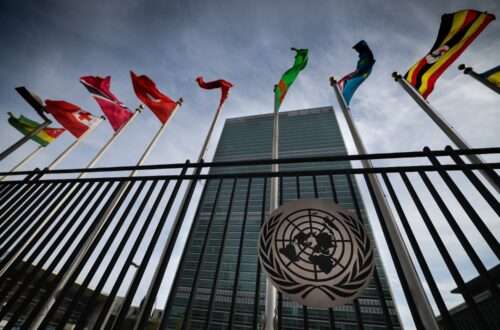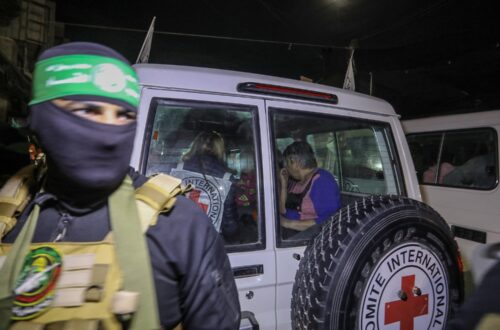Pluri, an Israeli company using cell technology to develop pharmaceuticals and food products, was awarded a major contract by the US National Institutes of Health to continue to develop its novel treatment for deadly radiation sickness.
The condition, also known as hematopoietic acute radiation syndrome (H-ARS), occurs when a person is exposed to high levels of ionizing radiation, such as during a nuclear attack or accident. Destruction of the bone marrow and blood cells ensues, leading to severe anemia, infection and bleeding.
Death can occur in four to eight weeks if effective treatment is not received.
The three-year $4.2 million contract offered to Pluri in July by the NIH’s National Institute of Allergy and Infectious Diseases (NIAID) will fund final studies required to complete the Haifa-based firm’s application for FDA approval to market its PLX-R18 therapy.
The approval would make it eligible for purchase by the US Strategic National Stockpile as a medical countermeasure for exposure to nuclear radiation.
Under the tender, Pluri will collaborate with the US Department of Defense’s Armed Forces Radiobiology Research Institute in Maryland to advance the work on the drug, which unconventionally aims to regenerate all three types of blood cells produced in the blood marrow, rather than just one.
The FDA previously cleared an Investigational New Drug application for PLX-R18 for the treatment of radiation sickness and granted it Orphan Drug Designation. This means that should a nuclear event take place in the meantime, Pluri could use the drug to treat victims.
David Cassatt, a program officer in NIAID’s Radiation and Nuclear Countermeasures Program, told The Times of Israel that a panel of experts in radiation biology and development of medical countermeasures against radiation injury was impressed with Pluri’s application and determined that the development of PLX-R18 fit with the agency’s goals.
“[This] is an ongoing part of NIAID’s program to facilitate the development of promising medical countermeasures against a threat that has been a concern for the US government over the last 20 years,” he said.
A possible attack on a nuclear facility in the ongoing war in Ukraine is of current concern. However, Pluri CEO and president Yaky Yanay emphasized that other radiation threats are very real, including the use of dirty bombs by terrorist groups and meltdowns of old nuclear reactors in Europe and the US.
“We are trying to prove that our product provides a much better solution for all symptoms of H-ARS. Most importantly, it allows the healthcare system to handle a catastrophic situation, because if, for example, 10,000 patients in a city like New York need blood transfusions once a week to treat the effects of a radiation event, it’s simply not feasible. We need to be better prepared, and we want to be part of the solution,” Yanay said.
PLX-R18 differs in its mechanism from the other approved H-ARS countermeasures in the US Strategic National Stockpile, which generally only treat one of the three types of cells targeted by acute radiation syndrome: white blood cells, red blood cells, and platelets.
“Most products approved will target the white blood cells, trying to mitigate infections,” explained Dr. Nitsan Halevy, Pluri’s chief medical officer. “Other products will be targeting the platelets, specifically trying to mitigate bleeding events. Our product works at a higher level, on the bone marrow cells that produce all three types of blood cells.”
When the cells in the drug receive signals that there is a drop in blood cell counts, they secrete proteins that travel to the bone marrow and assist in the regeneration of both the precursor cells and the blood cells themselves.
“What we’ve learned from animal models [mice and non-human primates] is when you treat ‘patients’ only twice by giving them two intramuscular injections about one week apart, the cells stay in the muscle for approximately four weeks and the ‘patient’ receives a big advantage on all three blood cell lines. So you’re using one product to treat all three manifestations,” Halevy said.
Studies employing various radiation intensities show that there is no need for additional injections or for further monitoring of patients’ blood counts.
She added that Pluri has some preliminary data indicating that the drug would be effective not only after radiation exposure but also as a prophylactic.
“This is obviously of great interest in a first responder type of situation where you need people to go in and do cleanup work after a nuclear accident, for example,” she said.
PLX-R18 is made from placentas donated by healthy women who have given birth by cesarean section in and around Haifa. They are raised in Pluri’s bioreactor platform to produce placental expanded cells, which can produce a variety of proteins in response to signals that they receive in the body. These cells do not differentiate into other types of cells and stay in the body unchanged until they are eventually cleared from the immune system.
The researchers were buoyed not only by the fact that they saw an extremely quick proliferation of blood cells following the administration of the drug to animals exposed to radiation but also by an increase in survival rates from 50 percent to between 70% and 100%.
Since PLX-R18 cannot be studied using human subjects for ethical reasons, it is being considered for approval through what is called the FDA’s Animal Rule and the European Medicines Agency’s Exceptional Circumstances Pathway. For this reason, the authorities are asking Pluri and its research partners for more refinements.
“The regulators wanted to have a better understanding of exactly which types of proteins the cells produce and what they cause in the body, and how that promotes the proliferation and differentiation of the different cell lines. So some of the experiments paid for by the new contract are targeted toward that,” Halevy said.
“Other experiments are targeted toward reaching a final understanding of the dose and dose regimen for humans. You can imagine that that’s challenging to translate from animal models to humans,” she said.
Pluri is hopeful that a study on PLX-R18 use in humans with poor graft function after bone marrow transplants recently published in the peer-reviewed Nature journal will add to the evidence needed for FDA approval.
“We tried to find a situation that closely mimics the effects of H-ARS… These are patients for whom everything went well with their transplant. They don’t have any infectious diseases and you can see the donor’s cells in their blood marrow. But for some reason that’s not very well understood, their blood counts are low and their risks are similar to those patients that have their bone marrow wiped out by radiation,” Halevy said.
The transplant patients were given two injections of PLX-R18 and followed up for a year, first and foremost to make sure that the drug was safe. The patients showed no side effects other than some pain and redness at the injection site.

An aerial view of the Chernobyl nuclear power plant, the site of the world’s worst nuclear accident, is seen two to three days after the April 26, 1986, explosion. In front of the chimney is the destroyed 4th reactor. (AP Photo)
The efficacy results were equally heartening. All three types of blood cells increased — especially platelets — and continued to stay high as the year progressed. The patients’ quality of life also improved, as they no longer needed to go to the hospital three to five times a month for blood transfusions.
There are also many deadly long-term health consequences to radiation exposure. For instance, victims of the Chernobyl Nuclear Power Plant disaster of April 1986 developed a variety of cancers. However, at this point, Pluri is focused on the most immediate dangers.
“Developing the longer-term effects is for those who are lucky enough to survive the initial event,” Yanay said.








